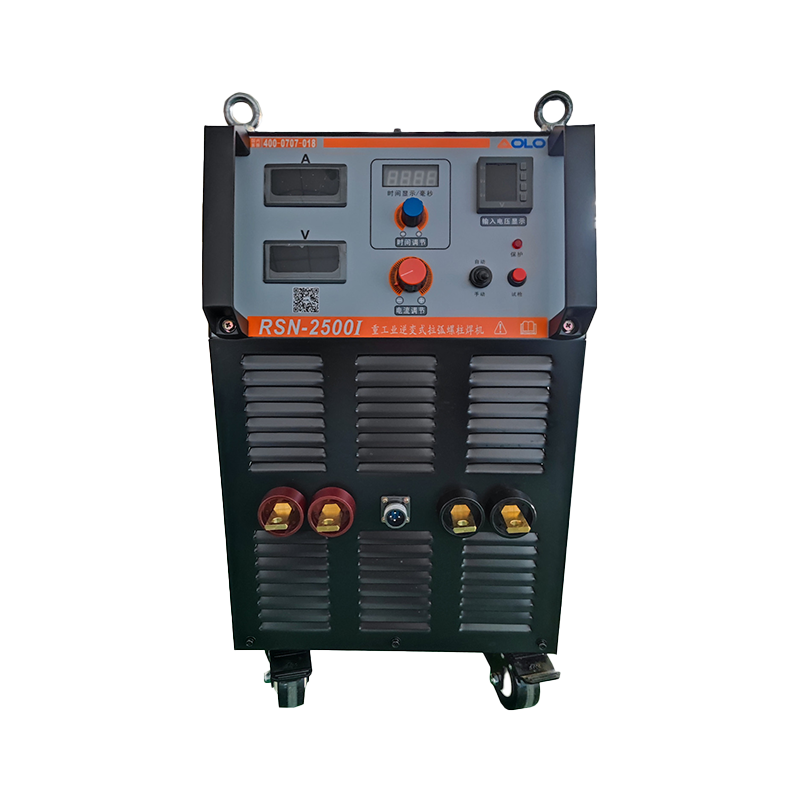NBC-315Y 220V/380V 300A IGBT Inverter Portable welder Built-in wire feeder 2T/4T MIG/MAG(GMAW)
Cat:Gas shielded welding machine
1、The machine adopts a phase-shifted full-bridge inverter main circuit...
See DetailsStud Welding Machine may involve risks such as high temperature, strong current and sparks during operation, so safety operating procedures must be strictly followed when using it. Here are some key safety operating precautions:
The spot welding machine must have a reliable grounding system to prevent electric shock accidents. Regularly check whether the grounding wire of the equipment is intact and whether the grounding resistance meets safety standards.
Before use, make sure that the power cord and socket are not damaged, worn or loose to avoid electrical short circuits or electric shocks.
When operating the spot welding machine, avoid operating the power supply or electrical equipment with wet hands to prevent electric shock. Avoid loose connection or poor contact between the power cord and the machine during use.
Plug and unplug the power supply correctly: Make sure that the equipment is completely powered off before plugging and unplugging the power cord to avoid electric shock caused by live operation.
Only professionally trained operators can operate the spot welding machine, ensuring that they understand the working principle of the equipment, safe operating procedures and emergency response methods.
Operators must wear appropriate safety protection equipment, including protective glasses, gloves, fireproof clothing, earmuffs, etc., to reduce the damage to the body caused by high temperature, sparks and noise.
Avoid misoperation: Operators need to understand the instructions and operating procedures of the equipment before operation to avoid equipment damage or personal injury due to improper operation.
The spot welding process will produce high-intensity arc light, and standard protective glasses need to be worn to protect the eyes from ultraviolet radiation.
Sparks may be generated during spot welding, so operators should wear full-face masks to protect their faces and eyes.
Make sure there are no flammable items such as oil, gas, wood or paper in the work area. Sparks may be generated during spot welding, and sparks may ignite surrounding combustibles.
The spot welder generates high temperatures, so operators should avoid direct contact with the welded parts to avoid burns. Make sure the operating space around the workpiece and equipment is clean, tidy, and free of debris.
The work area should be equipped with fire extinguishers or other fire-fighting tools to quickly extinguish the fire in case of a fire.
Ensure that the welding nails and workpieces are correctly and firmly fixed to the equipment during welding to avoid unstable operation caused by looseness or displacement.
Select appropriate current, time and pressure parameters according to the material, size, etc. of the welding nails and workpieces. Incorrect welding parameters may result in loose welding, overheating of the equipment or short circuit.

The spot welder should not be overloaded to avoid overheating or damage to the equipment due to overload. The rated parameters of the equipment should be followed during work.
The operating status of the equipment should be monitored at all times during spot welding, and abnormalities should be found and measures should be taken in time.
Regularly check the electrical system, mechanical parts, pneumatic components, etc. of the spot welder to ensure that all parts are working properly. Focus on checking whether the power cord, electrical components, welding guns, cylinders, etc. are faulty or damaged.
After each use, clean the surface of the equipment and the welding area, especially the welding gun and electrodes, to prevent scale and metal chips from damaging the equipment.
When the equipment is found to be damaged or parts are worn, they should be replaced in time to avoid affecting the welding quality and the safe operation of the equipment.
Harmful gases (such as welding fumes) may be generated during spot welding. Ensure that the working area is well ventilated and use exhaust equipment to remove fumes when necessary.
Avoid using spot welders in humid or rainy environments, as humid environments increase the risk of electrical equipment failure.
Ensure that there is sufficient lighting in the operating area so that the operator can clearly observe the welding area and equipment status.
The spot welder should be equipped with an emergency stop button or device so that the operator can quickly cut off the power supply in an emergency.
Ensure that there is a first aid kit and first aid personnel near the work area, and be familiar with the first aid treatment process, especially in the case of electric shock or burns, etc., which should be handled in time.
Before operation, ensure that the material, size and quality of the welding nails and workpieces meet the requirements to avoid poor welding or equipment damage due to inappropriate materials.
For pneumatic spot welders, check whether the gas source is stable; for electric spot welders, ensure that the power supply voltage and current meet the equipment requirements.
Set up clear safety warning signs around the spot welder to remind operators to pay attention to dangers such as high temperature, electricity and sparks.
Non-professionals or unauthorized personnel are prohibited from entering the operating area to avoid safety accidents caused by misoperation.
The safe operation of the spot welder is crucial, and the training of operators must be strengthened to ensure that they have sufficient safety awareness and operating skills. During use, pay close attention to the operating status of the equipment, take effective protective measures, and promptly detect and eliminate faults to ensure safe and efficient welding work.
Contact Us